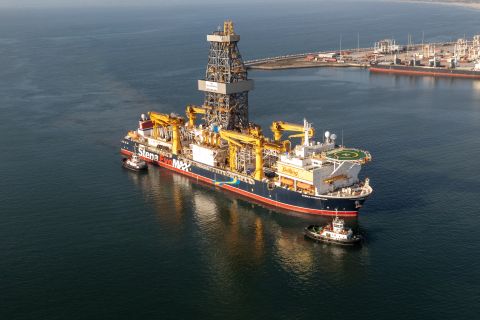Hydraulic fracturing, once used solely to extend production in marginal or mature wells, is now routinely credited for making shale gas production possible. Unfortunately, the technique’s full potential often is not realized because operators make drilling and stimulation decisions based on their experience in other shale plays, which proves costly and can leave sizable gas reserves trapped in the ground.
This situation prompted the need for a methodical, scientific approach to hydraulic fracturing, culminating in the development of Weatherford’s Fracology program. The program integrates formation evaluation, wellsite analysis, fracturing, and microseismic monitoring services such that each fracturing operation is evaluated, analyzed, executed, and verified for optimal reservoir development and long-term reserves recovery.
Evaluating the reservoir
Without a thorough understanding of a reservoir’s geological identity, subsequent steps in the well’s development can suffer. Formation evaluation services incorporate several direct measurements of rock cuttings and core samples to determine the production potential of a candidate well and the best drilling and fracturing approaches for the formation.
The evaluation disciplines include geochemistry to determine total organic carbon; shale rock properties to measure porosity, permeability, and mineralogy; desorption and adsorption studies to identify gas content and storage capacity; and rock mechanics to determine mechanical strength, Young’s Modulus, and Poisson’s Ratio. This information helps unlock the reservoir’s identity in terms of its relative brittleness, ductility, and ability to fracture and is used to optimize the stimulation design.
The company’s Compact line of logging tools can be deployed in the well to provide additional formation data. The Compact microimager (CMI), a small-diameter imaging tool, provides high-definition resistivity images and caliper logs, while the Compact cross-dipole sonic (CXD) tool, a 2 ¼-in. monopole/cross-dipole sonic tool, acquires compressional, shear-slowness, and fast-shear azimuth data in small-diameter, deviated wellbores. When used together, the tools produce anisotropy orientation data that improve formation characterization and indicate the intensity of natural fractures. These tools can be deployed by various conveyance techniques with little risk of sticking.
Real-time analysis
During drilling, Wellsite Geoscience services use detailed cuttings and mud gas analysis to help optimize the drill rig’s activities, geosteer the well, and identify sweet spots for proper fracture placement.
The wellsite technologies employed to analyze cuttings include the RockWise X-ray fluorescence (XRF) instrument for elemental analysis, X-ray diffraction (XRD) instrument for mineralogy, and Source Rock Analyzer (SRA) pyrolysis instrument to assess organic content. XRF elemental data can assist geosteering by reference to an elemental stratigraphy (chemostratigraphy) determined by a pre-drill study of core and cuttings. The elemental data also can be used to calculate the mineralogy of the rock and estimate its relative brittleness. High trace metal values, particularly vanadium, nickel, and molybdenum, are good indicators of organic richness. Direct measurements of mineralogy by XRD and total organic carbon by SRA provide verification and added confidence in the shale formation evaluation.
The company’s GC-Tracer surface gas detector is an in-line system that extracts and analyzes formation gas samples from drilling fluids as they arrive at the surface. This membrane-based extraction technology is inserted directly into the flowing mud stream to detect gas compositions – including hydrocarbon gases, oxygen, carbon dioxide, and benzene – in minutes and at a much higher sensitivity than other gas acquisition systems. GC-Tracer quickly quantifies gas ratios to provide an early indication of potential total reserves, determine relative formation permeability, and detect sweet spots in the shale.
If required, an LWD system can provide further reservoir information. The system incorporates azimuthal density (AZD) sensors to deliver speeds up to 400 ft/hr (122 m/hr) while drilling. The LWD sensors provide real-time feedback on the formation rock’s bulk density and orientation, and track changes in lithology, all of which help to optimize well placement for maximum production.
The Revolution rotary-steerable system (RSS) uses data supplied from these analysis tools to help the bit stay within the pay zone. Revolution delivers a high-quality wellbore to improve the efficacy of completion sealing equipment and the system’s high dogleg capacity (10°/100 ft for an 8 ½-in. hole section) allows the vertical, curve, and horizontal sections of a wellbore to be drilled in a single monobore. This RSS system’s real-time whirl monitoring allows the driller to quickly mitigate the conditions causing whirl and helps maximize rate of penetration and minimize tool vibration.
Executing the fracture
Working from data obtained by the onsite analysis tools and continuous feedback from microseismic monitoring, in-field crews can first plan an optimal fracture design and then make changes during fracturing based on changing stress conditions in the reservoir.
The fracturing service uses a modular suite of zonal isolation options to ensure that fracture fluids are diverted to the right places in the reservoir. The choice of zonal isolation is determined by analyzing the length, shape, and condition of the zone, as well as the competency of the formation – information obtained from the wellsite analysis during drilling.
A range of proppant and fluid technologies is available to accommodate various reservoir conditions, including DynaFrac, a high-performance water-based fluid system that can be applied continuously or in batches and at reservoir temperatures up to 149°C (300°F) with adjustable crosslink times. Other systems include fluids
for nitrified or foam frac systems, and the MagnumFrac H fluid, applicable at reservoir temperatures up to 204°C (400°F).
Real-Time Verification
Microseismic monitoring services monitor and verify the quality of a fracturing operation as it proceeds. Real-time microseismic data gathered during fracturing guides the field team’s actions in adjusting fracturing parameters on the fly and as needed. It also provides a 3-D view of the drainage network, which is not available using other downhole monitoring methods.
The company deploys its multilevel microseismic arrays in one or more neighboring wells or in the treatment well itself using a variety of conventional wireline deployment options and highly specialized seismic arrays. The arrays can monitor stimulated geometry to avoid fracture growth into water-bearing zones, map reservoir fluid mechanics, and detect anomalous drainage patterns due to natural fractures.
A team of geophysicists and engineers is involved in each step of a microseismic monitoring project, from planning and modeling to acquisition, data processing, and presentation of findings. Data are processed using the Divine 2-D ray trace-modeling package from Semore Seismic. The output is presented in a 3-D viewer that allows Weatherford to input microseismic, VSP, and log data, as well as frac pump rates, so the entire project can be viewed in one format.
Tying a properly executed microseismic program into the fracture stimulation can reduce the time and costs of fracturing, while also guiding improvements in frac design to achieve significantly higher production rates, lower decline rates, and less water incursion.
Recommended Reading
E&P Highlights: March 11, 2024
2024-03-11 - Here’s a roundup of the latest E&P headlines, including a new bid round offshore Bangladesh and new contract awards.
E&P Highlights: April 22, 2024
2024-04-22 - Here’s a roundup of the latest E&P headlines, including a standardization MoU and new contract awards.
Sinopec Brings West Sichuan Gas Field Onstream
2024-03-14 - The 100 Bcm sour gas onshore field, West Sichuan Gas Field, is expected to produce 2 Bcm per year.
Tech Trends: Halliburton’s Carbon Capturing Cement Solution
2024-02-20 - Halliburton’s new CorrosaLock cement solution provides chemical resistance to CO2 and minimizes the impact of cyclic loading on the cement barrier.
Stena Evolution Upgrade Planned for Sparta Ops
2024-03-27 - The seventh-gen drillship will be upgraded with a 20,000-psi equipment package starting in 2026.





